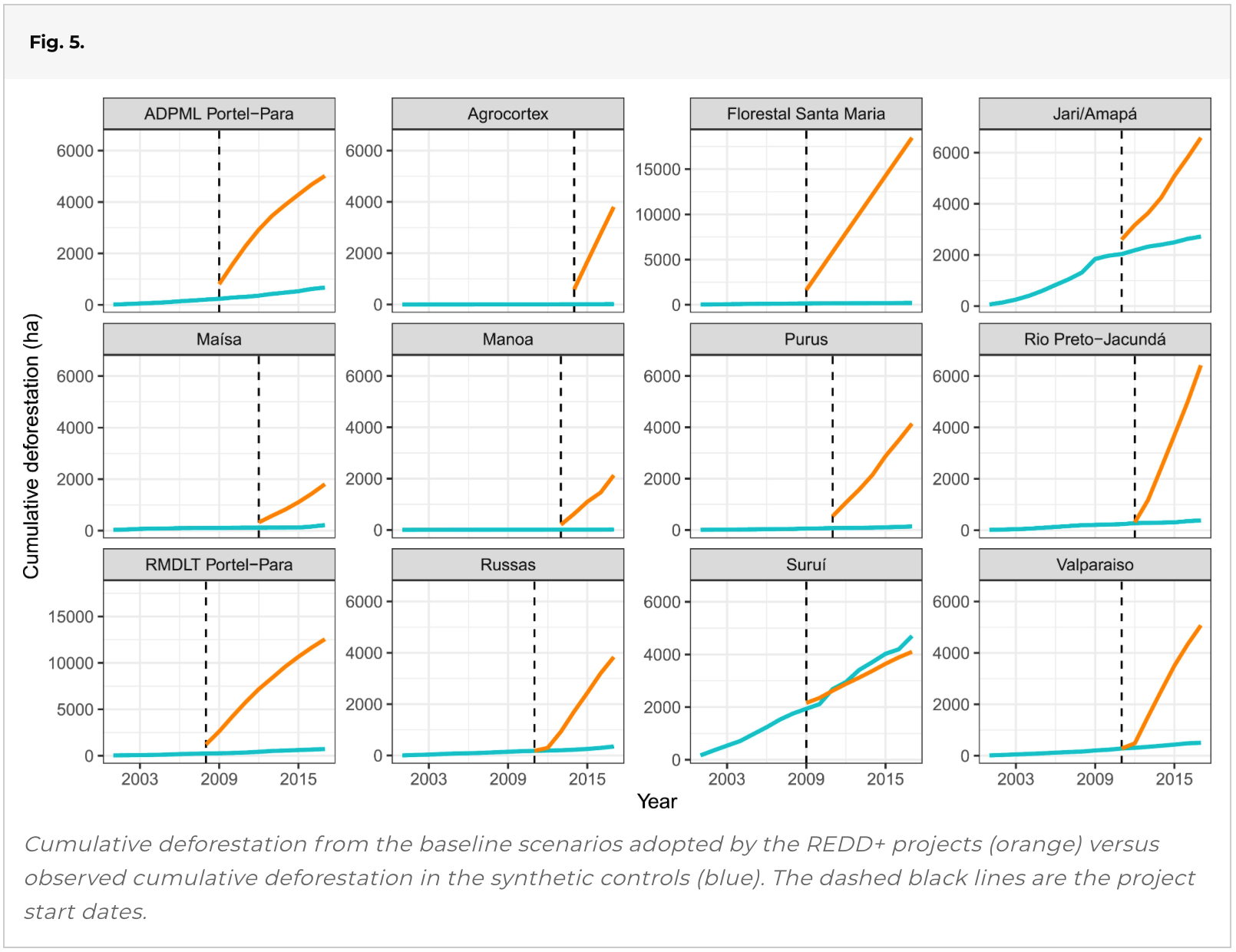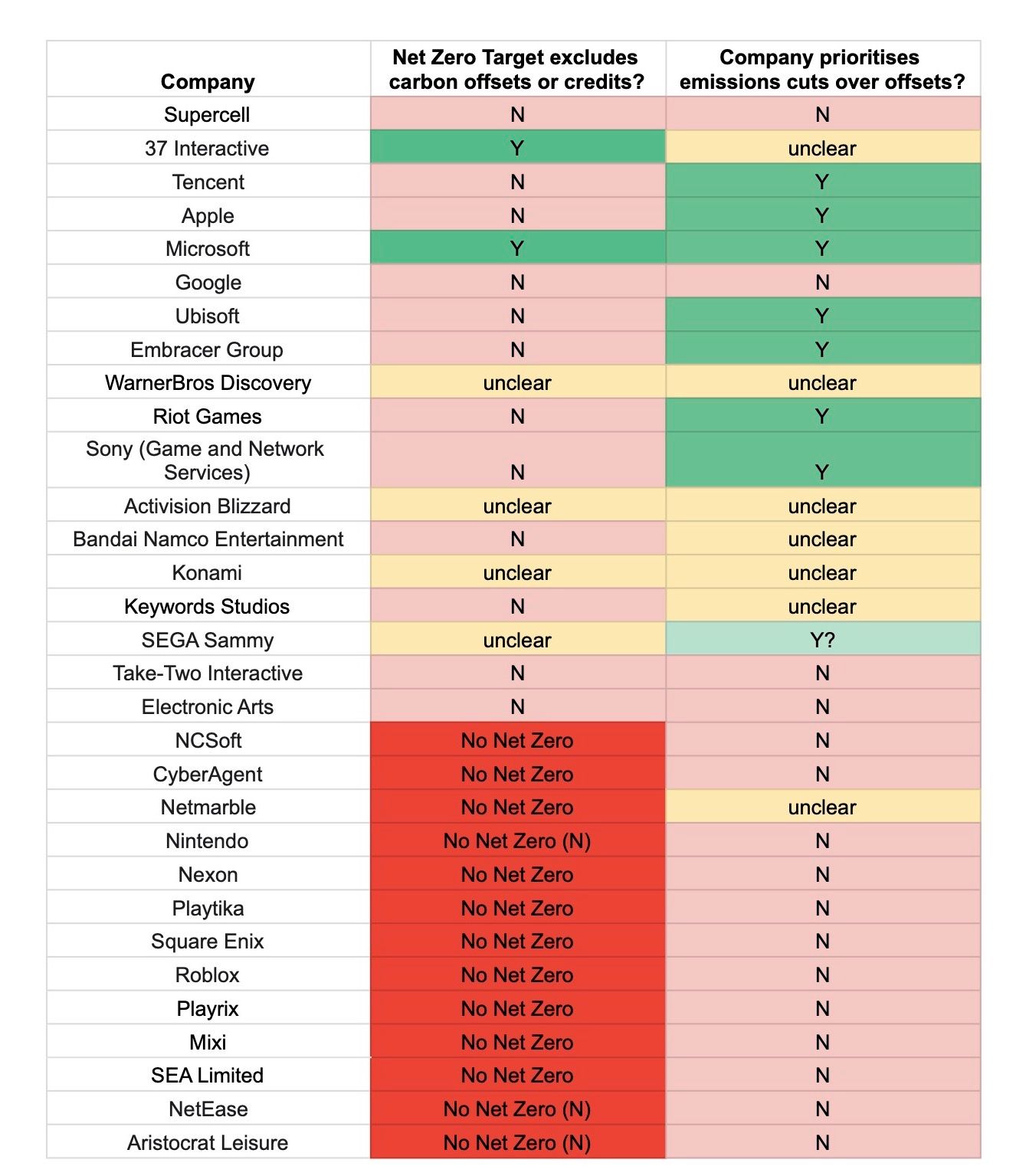How exposed is the game industry to dodgy carbon credits?

The big, BIG news this week is the joint investigation between The Guardian, Die Zeit, and investigative journalists at SourceMaterial, involving studies conducted by several teams of researchers, publishing their findings in three papers so far, pointing to deep, structural problems with certain kinds of carbon credits.
The research calls into question the veracity of a huge amounts of credits certified by the largest offset verification scheme in the world (run by Verra – the ‘verified carbon standard’ or VCS), and the evidence is persuasive. I read one of the main papers to see for myself – titled 'Overstated carbon emission reductions from voluntary REDD+ projects in the Brazilian Amazon' – which used a technique called ‘synthetic control’ to try and separate out the change delivered by the voluntary REDD+ projects (certified by Verra under the VCS standard) from the background trends of deforestation. It’s hugely technical stuff, and even I won’t claim to really fully have my head around it, but it seems to boil down to what sort of baseline assumptions you have, and the trends you assume around clearing forests. What is involved in issuing these credits is the creation of a counterfactual condition – “if X had happened then Y would have resulted” – i.e. if we didn’t do this REDD+ project, then X hectares of rainforest would have been logged. In the paper though, the researchers write that “using the synthetic control method to estimate REDD+ counterfactuals, we find no systematic evidence that the certified carbon offsets claimed by the voluntary projects in our sample… are associated with additional reductions in deforestation.” Gulp.
The below graph shows the difference between the ‘projected’ baseline deforestation amounts that the REDD+ projects assumed would happen without their intervention, and the accumulated deforestation that actually was observed in the ‘synthetic controls’ areas (which are just other regions nearby):

If those steep orange curves look a bit, er, ambitious to you then they probably are. Obviously, this really fucking sucks. Well-intentioned people and organizations who want to do the right thing have been parting with their hard earned for almost certainly dodgy carbon credits. These types of projects are also some of the biggest sources of offsets on the voluntary emissions reduction market. This is a big problems, as the authors of the paper write: “In addition to the direct cost of not effectively offsetting GHG emissions, the excess credits generated by these projects impose an indirect cost on legitimate climate change mitigation efforts by undercutting the price of their credits.” They flood the market with cheap, unreliable credits and make the real worthwhile projects harder to fund. It’s a really perverse system once you see it, and you really could be excused for thinking much of these credits exist as an excuse to avoid doing the real hard work of reducing emissions. When they’re being bought by companies like Shell, it’s kind of hard to argue with!
The implications from this study, then, is that carbon credits are not helpful, and really should be much less plentiful in the marketplace, much more expensive, and ideally a complete last resort. The study also underscores the challenge facing anyone looking to purchase real and legitimate offsets, and speaks to why it is so important to find ways to make direct emissions reductions first, before reaching for the pocket-book and claiming ‘carbon neutrality’.
Naturally, after reading the details of this study, I started to wonder just how exposed the games industry is to these sorts of dodgy carbon credits. So I went back to the data sources I compiled for the Net Zero 2022 snapshot and looked for mentions of the credits and offsets in emissions reduction plans.
The results are listed in the table below, which features most of the same companies as in the Net Zero Snapshot (excluding a few subsidiaries) ordered by net zero date, and marked against whether they exclude carbon offsets or credits from their emissions reduction strategies or not. As this is a bit of a crude metric, as there is a legitimate place for the judicious use of carbon offsets for hard to abate sectors (setting aside whether games counts as that for the time being), I also included a column for whether the company stated a priority for direct reductions over offsets. That improved the picture slightly, but it’s still hardly great news.

The table suggests to me that there is a significant challenge ahead for the games industry in achieving genuine net zero emissions without relying on the types of sham credits that the researchers found above. The number of yellow ‘unclear’ positions on the use of credits could be an effect of simply my not being able to find any statements on their priorities rather than a lack of actual commitment. Perhaps some do have this foundational concept clearly informing their strategies and plans, but it is impossible to say from here.
I want to talk about a couple of the statements made, however, and break down what these companies have noted about their strategy and use of offsets. To be completely clear this is not to call out any of these companies (beyond those already called out as lacking in the snapshot for inadequate targets). Instead this I wanted to illustrate some of the pitfalls and the breadth of the challenge, as well as some of the solutions that might already exist. This is an extremely complicated subject, it’s hard to get right and even I slip up between different terms and standards and “carbon neutral” vs “net zero” and all the rest of it. I do truly believe that the vast majority of those in the industry are trying to do the right thing – but the headwinds are significant.
As if to illustrate just that: Supercell were the top performer in the 2022 Snapshot, having already set a net zero target of 2022 and seemingly achieving it. However the only statement I could find about the use of offsets now gives me some pause and makes me reconsider slightly. Supercell claims to be “offsetting 200% of carbon emissions from our operations as well as 100% of those created by mobile devices.” What sort of offsets are being used, what standard is used to create these credits? Are there emissions being offset that could be abated first? I couldn’t find more detail. Furthermore, the rules of the Science Based Targets Initiative (SBTi) state that:
The use of carbon credits must not be counted as emission reductions toward the progress of companies’ near-term science-based targets. Carbon credits may only be considered to be an option for neutralizing residual emissions or to finance additional climate mitigation beyond their science-based emission reduction targets
It’s difficult, therefore, to see how Supercell can have achieved true net zero (according to the SBTi definition at least) without seeing more detail. The use of offsets to finance additional mitigation beyond neutrality targets however is certainly legitimate (other issues aside), so it’s complicated. If anyone from Supercell wants to reach out to let me know I would be grateful.
A similar situation approaches Embracer Group – which mentions in at least one place the main themes or steps being: “Measure footprint > Carbon reduction > Carbon offsets”. Embracer has just completed the firsit phase of this so presumably reductions are next, however they also “aim to submit our emissions reductions targets for third-party validation by the SBTi during the upcoming financial year” which will likely see the final step and the use of offsets possibly an issue, as per SBTi rules.
Ubisoft mentions that it has "financed greenhouse gas avoidance and capture projects outside its value chain, up to the amount of its emissions in 2021." The terminology of avoidance and capture used here is more precise than the more general terms of offset or carbon credits, which suggests that the group’s ESG leaders (Hi Nicolas!) have a more developed appreciation of the problems associated with credits and offsets. This is borne out in the following very considered note, worth quoting at length:
The financing of these projects is in no way a substitute for emission reduction targets because it is not a physical and effective offset of emissions calculated by the Group in previous years. This is a voluntary and complementary effort by the Ubisoft group to contribute to the trajectory of global carbon neutrality.
These voluntary purchases of carbon credits were re-invoiced to the Group’s main subsidiaries in order to raise their awareness of their footprint, make them more responsible and encourage them to integrate carbon issues in their decision-making and ultimately reduce their own emissions. As a result, we can consider that the climate contribution projects were financed by an internal levy on the carbon emissions of the main subsidiaries.
If you want to do offsets and credits, this is about as good as it gets. Kudos to Nicolas and the team for being so thorough and careful, for turning it into an internal carbon tax (much like Microsoft’s own). Ubisoft also reports that it relied on membership of the Net Zero Initiative Group for ensuring that all purchased credits “comply with the requirements of internationally recognized standards (Gold Standard, VCS, UNFCCC, etc.) and therefore meet the necessary quality criteria" – though that group may be considering revisiting Verra’s VCS after this week and projects supported through it.
37 Interactive Entertainment mentions that in 2021 the organisation "began to explore green electricity certificate transaction" which is a fairly standard method of supporting renewable generation projects, and I could find no mention of offsets or credits, seeming to just be focussing on avoiding emissions.
Moving to the Tech Majors – Tencent has stated it “will prioritize the use of active emissions reduction measures while keeping the use of carbon offsets to a minimum" which is in line with the SBTi.
Apple has claimed “carbon neutrality” since 2020 "for our corporate emissions by sourcing 100 percent renewable electricity for Apple facilities, implementing energy efficiency initiatives, and securing carbon offsets for remaining emissions." The key question however being what kind of offsets are bought, how much, and what kinds of emissions are being offset? Well, we actually get an bit of an answer here, via this image (and a table elsewhere) showing how relatively small the offset purchases for these ‘residual’ emissions actually are:

To my reading of this, it looks like Apple is purchasing about 15x more emissions reductions through purchased renewable energy than offsetting with credits (in total, about 667 mt of CO2 from offsets – perhaps just for Scope 1/2 emissions? This doesn't seem nearly enough to cover the portion shown in Scope 3). We do get details of the kind of credits purchased though, and I’m sure Apple’s ESG team will be reevaluating these after the newly published research as they include “a REDD+ coastal conservation project in Guatemala and a reforestation project in Guizhou Province of China. These projects are all certified to the VCS and CCB standards.” Maybe these projects are better than the Brazilian ones. Here’s hoping.
In comparison to Apple, Google also purchases carbon offsets – however in a much more substantial amount, and the ratio of purchased renewables to credits seems less favourable to me. This table gives me some pause:

Purchasing just 2x the avoided emissions through renewables as through offsets gives me the heebie-jeebies (technical term) and makes me worry that Google Cloud Platform – about which I have been reading some very positive things lately – might not be the data centre silver bullet (though perhaps it doesn’t affect GCP since it is apparently 100% renewably powered?), and its something else entirely doing all that emitting. 2 million tons worth of CO2 offsets is a lot though, and I’d be pretty upset if I were Google and had spent all that on sham credits. Google are also still relying on this 2011 offset purchasing methodology if a link to it in the latest ESG document is to be believed. Bit weird, but OK.
The last one to highlight is Microsoft who are basically the only double green on the table – excluding any use of carbon offsets from their net zero strategy, as well as emphasising the need to make real emissions cuts before reaching for offsets. Perhaps due to the ambitious nature of this requirement, Microsoft released in 2021 a series of documents and guides on how to purchase high quality carbon dioxide removals – the distinction here is that these are not just emissions prevented so much as removed from our already over-carbonated atmosphere.
I strongly suspect that this is the sensible next step for much of the corporate purchasing of carbon credit style programs, though the market for removals is still in its very, very early stages. But as more and more evidence of the unreliability of allegedly ‘avoided’ emissions like REDD+ deforestation projects comes out offsets are likely to begin to be viewed as more of a relic of an earlier era than a legitimate climate solution. Offsets increasingly feel like an idea from a time when we had the luxury of indulging in some delay and distraction, where ambiguity about the effectiveness of our actions was more tolerable. Unfortunately, that time is now behind us.
If you’ve got a sustainability research question in need of answering, or haven’t locked in your ESG strategy for your games studio or company, AfterClimate is here to help! Get in touch via the website. /End plug